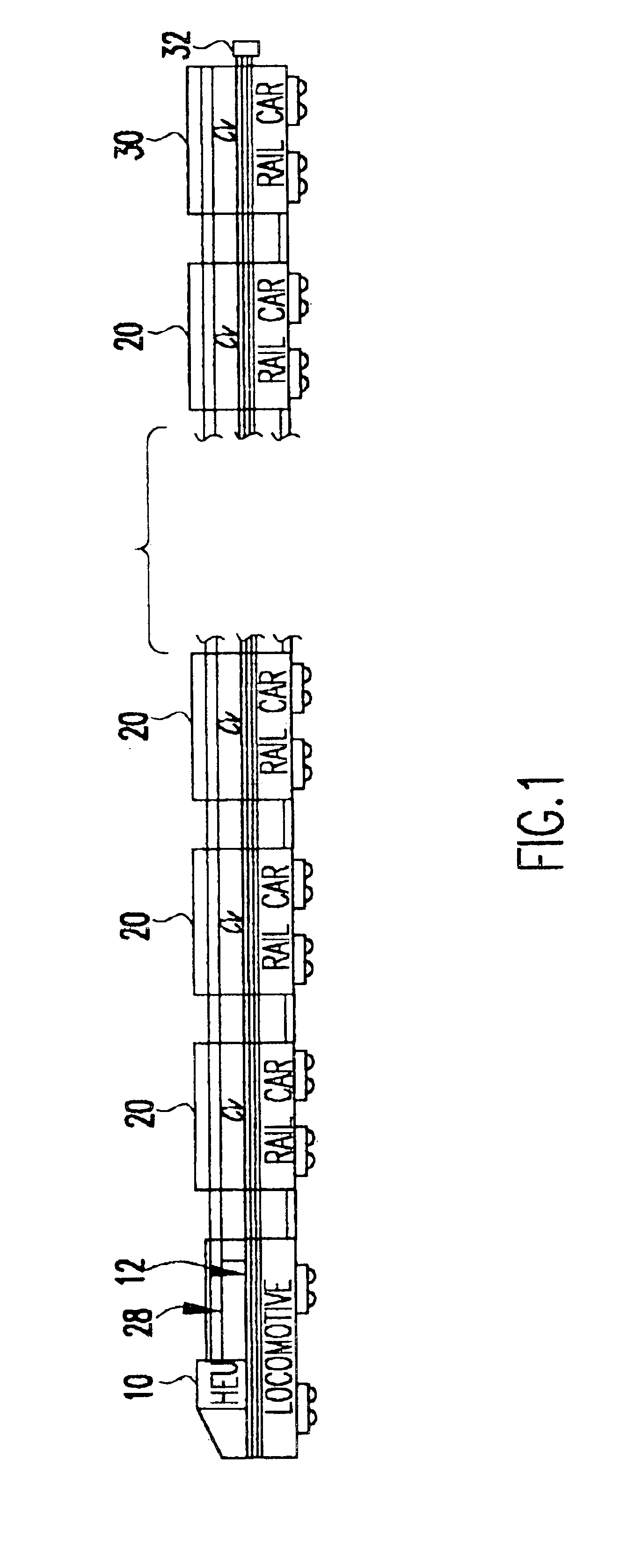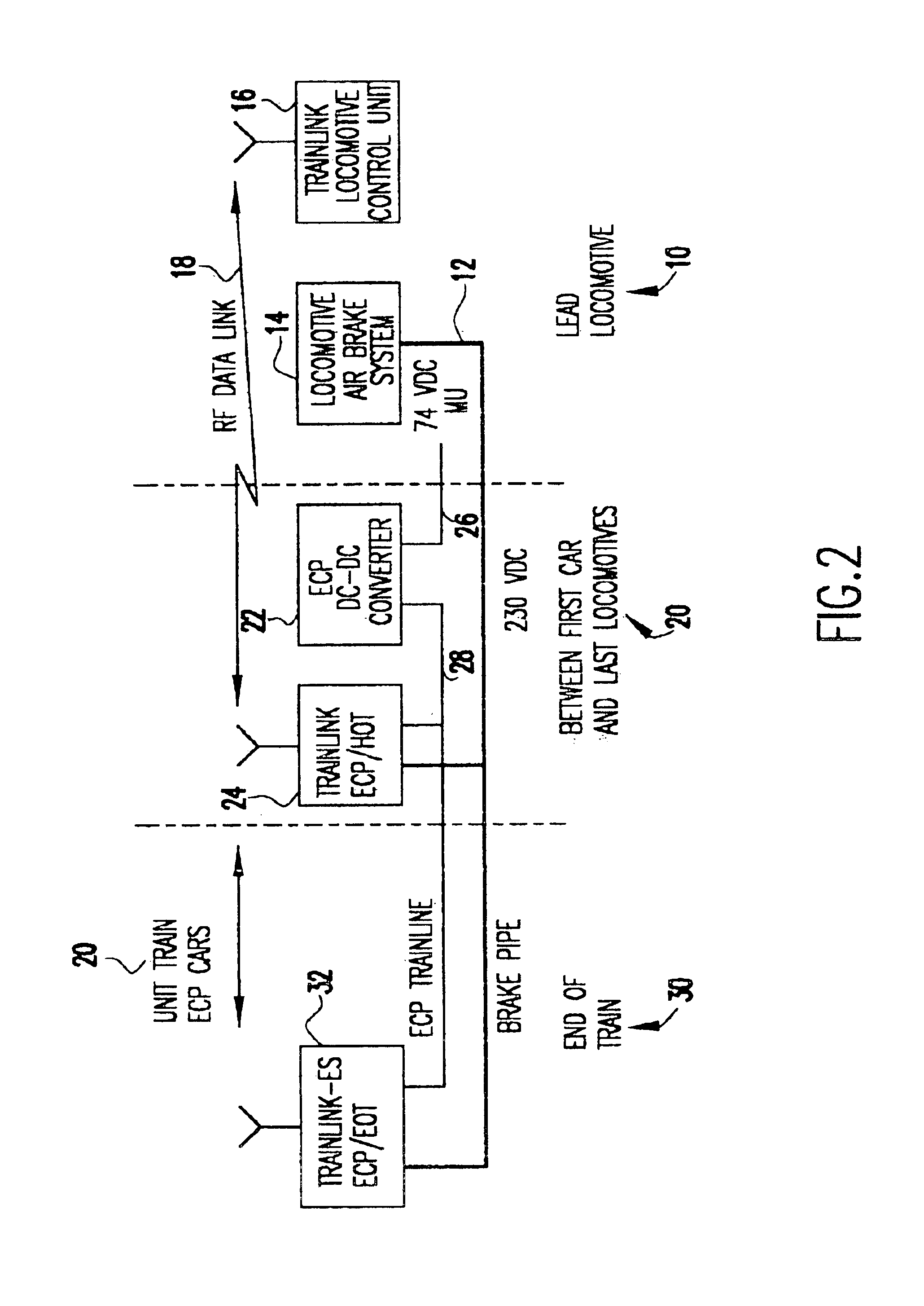Electrically controlled pneumatic end of train pneumatic emulation system
a technology of electric control and pneumatic emulation system, which is applied in the direction of braking system, instruments, analogue processes for specific applications, etc., can solve the problems of reduced braking efficiency of the train, inability to achieve graduated release, and extra costs associated with i
- Summary
- Abstract
- Description
- Claims
- Application Information
AI Technical Summary
Benefits of technology
Problems solved by technology
Method used
Image
Examples
Embodiment Construction
The present invention generally relates to intra-train communications for implementing Electrically Controlled Pneumatic (ECP) railroad freight train brakes on a train car. More specifically, the present invention allows full train speed operation of standalone ECP unit trains, even with non-ECP equipped locomotives. The system of the present invention is based upon a close operational integration with the end of train (EOT) system and preferably maintains full brake pipe continuity and normal pneumatic emergency functions throughout each train car of the train consist.
One of the primary advantages of using the system of the present invention is that the same pneumatic gages or screen indicators used for conventional pneumatics operation as the main feedback of braking action on lead locomotives may be used with the system of the present invention. In this way, a lead locomotive does not have to be retrofitted for ECP operations. Also, unlike conventional systems, the train brake ap...
PUM
 Login to View More
Login to View More Abstract
Description
Claims
Application Information
 Login to View More
Login to View More - R&D
- Intellectual Property
- Life Sciences
- Materials
- Tech Scout
- Unparalleled Data Quality
- Higher Quality Content
- 60% Fewer Hallucinations
Browse by: Latest US Patents, China's latest patents, Technical Efficacy Thesaurus, Application Domain, Technology Topic, Popular Technical Reports.
© 2025 PatSnap. All rights reserved.Legal|Privacy policy|Modern Slavery Act Transparency Statement|Sitemap|About US| Contact US: help@patsnap.com



